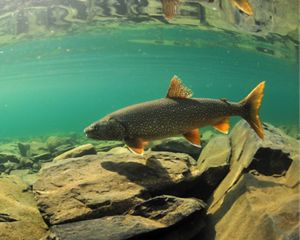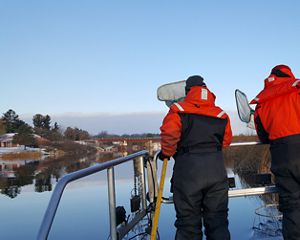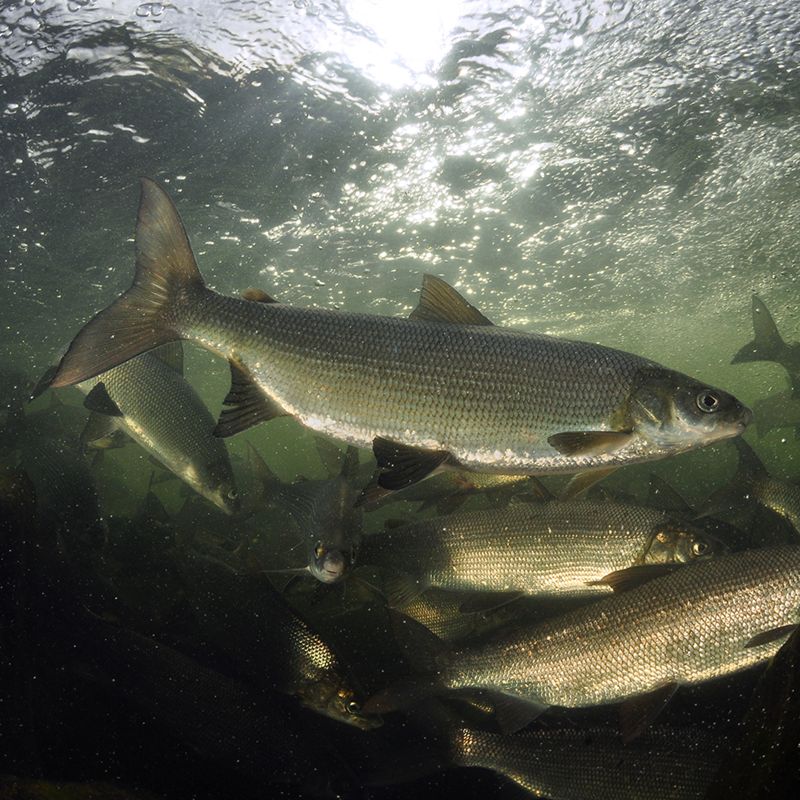
Returning Whitefish to the River
Scientists and conservationists work to revive river-spawning lake whitefish, aiming to restore the Great Lakes.
Blanketed by more than a foot of snow, the banks of the Jordan River glistened in the morning sunlight. A group of scientists and conservation staff from the Little Traverse Bay Bands of Odawa Indians (LTBBOI) and The Nature Conservancy stepped carefully through the snow, carrying buckets and a long PVC pipe. A reporter from Interlochen Public Radio rounded out the party.
Led by Kris Dey, hatchery manager for LTBBOI and Matt Herbert, senior scientist for TNC in Michigan, the group was there to stock lake whitefish eggs in the river. The project was part of a comprehensive, multi-partner effort to re-establish river-spawning runs of lake whitefish, and eventually help recover lake whitefish populations in the Great Lakes.
It couldn’t come at a more dire time: Great Lakes whitefish are struggling as invasive quagga and zebra mussels have decreased the zooplankton that newly hatched whitefish eat. Lake whitefish are an important economic and cultural food source in the Great Lakes, from the restaurants that serve them in tourism-dependent coastal towns to the tribal and commercial fishers who supply them.
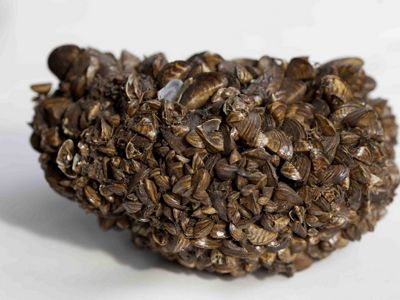
Great Lakes whitefish are struggling as invasive quagga and zebra mussels have decreased the zooplankton that newly hatched whitefish eat.
Yet, those fishers are seeing fewer and fewer returns for their efforts. For example, Dey’s LTBBOI team collects whitefish from Lake Michigan’s Little Traverse Bay for its hatchery and restoration activities, including the eggs being stocked in the Jordan River. In an area of the bay where they normally catch over 400 fish, the most recent effort yielded only 32.
Historically, lake whitefish used to spawn in tributary rivers as well as in rocky reefs in the Great Lakes. These rivers provided nutrient-rich spawning grounds for whitefish that would migrate out to the Great Lakes and return in four to five years when they reached maturity. However, log drives and dams of the late 19th and early 20th centuries scoured the river bottoms and blocked upstream passage, wiping out these river-run populations.
Amidst the declining fishery, the Green Bay population of whitefish was an anomaly, sustaining its numbers while they fell in other parts of the Great Lakes. The difference? Lake whitefish were spawning in Green Bay tributaries.
Re-establishing river spawning whitefish in the Great Lakes could help recover their populations if the partnership-which includes the LTBBOI, the Sault Tribe of Chippewa Indians, the Bay Mills Indian Community, Michigan Department of Natural Resources and TNC-can find the most effective methods of stocking them. They’re trying different methods and ages of stocking-eggs, eyed eggs, spawning adults-in tributaries including the Carp River in the Upper Peninsula and the Jordan River.
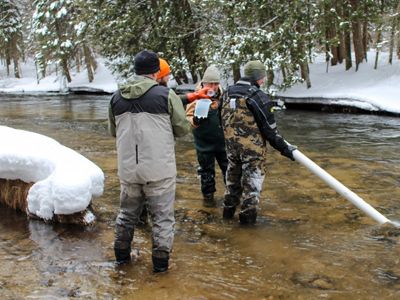
One method involves using egg incubators. Last year, this method produced the first successful river-produced whitefish in the Jordan River after the team stocked more than 100,000 eggs in anchored yellow egg incubators in February of 2024. This year, the team stocked eyed eggs directly into the river substrate, where they can spread out as they would in natural spawning conditions.
This winter, the crew marched along trodden snow trails upstream to find rocky river bottom habitat where eggs would naturally find nooks and crannies to hide from predators. The team stocked just over 25,000 eggs, transporting the eggs in plastic water-filled bags and carried in buckets, like goldfish from a pet store.
The team held a long PVC pipe to deliver the eggs directly to the river bottom to minimize them being carried immediately downstream by the river current. Dey poured the eggs into the PVC pipe, and Herbert washed them down the pipe with a pitcher of river water. The team moved upstream, depositing eggs at 10 locations until they were all stocked.
The team planned collection later in March when they expected the whitefish eggs to hatch and start moving downstream. They won’t know for sure which method is most effective for a few years, when lake whitefish hopefully return to the river to spawn again on their own.
As with much of TNC’s Great Lakes work, the project is a long-term, science-informed and partner-driven experiment to find a solution that can then be scaled up by agencies with additional resources to have an impact at a system-wide level.
This work is complemented by spawning reef restoration and monitoring and a new eDNA (environmental DNA) initiative across the Great Lakes basin to survey tributaries that may either hold spawning whitefish or provide suitable spawning habitat in the future.
Through strong collaborations with great partners, TNC is working to rebuild Great Lakes whitefish populations before it’s too late.

Get Inspired by Nature Near You
Sign up to receive monthly conservation news and updates from Michigan.
